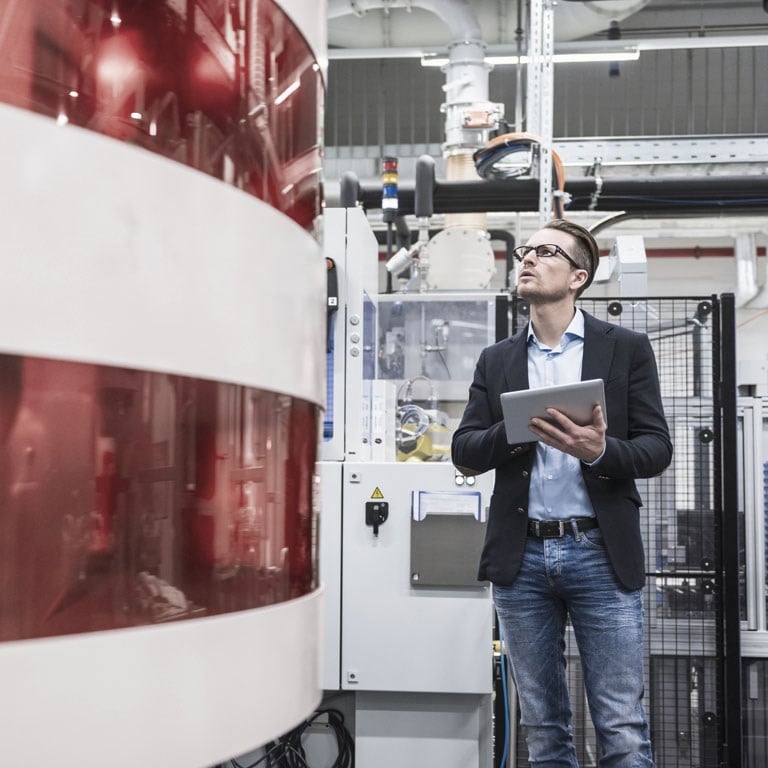World Economic Forum
This article originally appeared on the World Economic Forum Global Agenda.
Transforming a company into a digital enterprise is tough. Many companies have had some success, but few have completed this metamorphosis. No comprehensive playbook, or even checklist, exists for executives to follow.
A prudent first step is to learn from others—both inside and outside our industries. This brought us in late November to a meeting of more than 20 executives from a range of industries from across the world, hosted by the World Economic Forum.
Our ambition: to explore the challenges raised by digital transformation, design answers, and create practical tools on how to transform a company with digital.

More Digital Transformation Insights
Digital transformation is a topic of rich and vital discussion in boardrooms and among executive teams around the world. Here are some insights on what it takes to lead and deliver a digital transformation.
We began to develop a list of pertinent questions. How do we balance investment for today’s opportunities with investment for the future? How do we win the war for digital talent? How do we effectively fund digital initiatives? How do we drive digital initiatives to scale?
We quickly realised that all our questions centered on four building blocks: where your business should be going (digital strategy); how that fits what your business does (business model); what you need to get there (enablers); and how you will manage change to reach your destination (orchestration). With those identified, we took a first step to exploring these further, forming a high-level checklist for digital transformations.
Digital strategy
In our collective experience, setting a digital strategy starts with confronting three key questions: where is my industry headed, what will my company’s role be in that future, and how can I create a path forward that balances a sense of direction with the ability to adapt along the way?
While we didn’t have all the answers to those questions, one idea that resonated with the group was to combine “today forward and future back”—every digital transformation must include elements that pursue business opportunities that are relevant today as well as those that put the organisation on the path towards the future.
Statoil’s digital roadmap includes both today-forward and future-back elements. The today-forward components emerged from our “GoDigital” project, where we asked the organisation to identify initiatives to improve our current business.
We recently announced a new onshore integrated operations centre to increase safety, improve operations and reduce emissions. In parallel, 11 high-potential leaders from across the company were tasked with exploring future-back ideas—the next evolution of Statoil in a digital age. This dual approach led to a clear, balanced vision, business engagement and a group of executives motivated for the transformation to succeed.
Business model
Through our conversations, we clarified the idea that digital transformations are still business transformations. They must drive real value for the customer and improved outcomes for the business—not merely install technology for technology’s sake. These transformations typically result in shifts in the customer experience, digitalisation of products and services, the emergence of new economic models, and advances in operations. All of us asked the same question: is this just the cost of doing business today or can we derive additional value from these improvements?
Enablers
All our digital journeys require changes to key enablers or the installation of new ones—data and analytics, IT systems, operating model, people and culture. While digital transformations are obviously about technology, technology often turns out to be relatively easy to get right. We were amazed at how much success really depends on organisation and culture, and how difficult those can be to change. Our greatest challenges lie in hiring new talent, enhancing skills of our own, and shifting our culture to become more innovative and adaptable.
At Statoil, the need to retrain the workforce has already been embraced. Over the next few years, we will invest $12 million (100 million NOK) in hands-on digital education offerings through Statoil’s Digital Academy.
Orchestration
The final topic we discussed was orchestration. Many of us in the room are currently in charge of managing a digital transformation and realise how complicated the journey truly is. Most digital programs start with experimentation—a contained test with dedicated funding, top talent, and strong leadership support. Here, we’ve all seen success. However, it remains a formidable task to then take that experiment and scale it throughout the enterprise. We run into obstacles around securing funding, changing the behaviour of thousands of people (not just 10), and integrating into legacy IT systems, to name a few.
Leadership has been critical to the success of the transformation journey for Statoil—communicating priorities, securing funding and overcoming other obstacles. In addition, high-potential leaders from across functions act as digital ambassadors. They are championing the digital effort within their teams and across the company and are helping change the mindset of our 20,000 employees.
Once we had articulated the elements required for our transformation, we were able to discuss with some specificity which areas we find most challenging and which seem under control.
We will explore these topics in more depth, as our Executive Working Group continues in a series of workshops and calls over the coming months. The findings of our group will be collected in a comprehensive report published in June 2018, coinciding with the Annual Meeting of the New Champions in China, as well as in companion case studies and practical tools.
Åshild Hanne Larsen is the CIO and senior vice president, Corporate IT, of Statoil ASA. Ouriel Lancry is a coleader of Bain's Global Digital practice and is based in Chicago. Mehran Gul is the project lead for the Digital Transformation of Industries initiative at the World Economic Forum in Geneva.